by Adela Lovric // July 21, 2023
This article is part of our feature topic Wilderness.
The art world has reached a critical stage of ecological self-awareness. In the heyday of biennialization, creating large-scale exhibitions without addressing their environmental impact is seen as out of touch, to say the least, while their right to exist at all is under scrutiny by the most climate-conscious among us. Even though sustainable exhibition-making might not make a crucial difference compared to major polluters and extractors, what holds paramount importance in art nowadays are new perspectives and models of behavior that can influence our future coexistence.
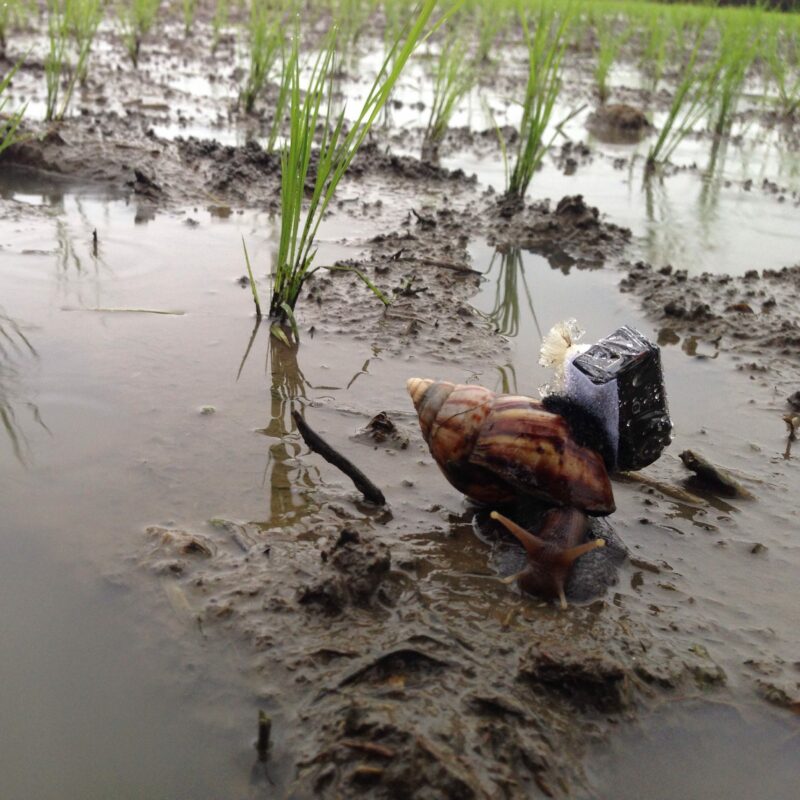
Yen-ling Tsai, Isabelle Carbonell, Joelle Chevrier, Anna Tsing: ‘Golden Snail Opera,’ 2016 // Photo by Isabelle Carbonell
Joasia Krysa, the chief curator of the Helsinki Biennial, leads by example, centering ecological thought not only through intertwining conceptual threads of contamination, regeneration and agency, but also through practices such as sourcing local materials for production and reducing the amount of new commissions and total number of artworks. The latter may leave you wanting more—however problematic that may be—and needing to reassess your expectations. Invoking Anna Lowenhaupt Tsing’s influential book, ‘The Mushroom at the End of the World: On the Possibility of Life in Capitalist Ruins’ (2015), as its ideological compass, this biennial consciously goes against the “bigger, better, faster” logic spawned by industrialism or, as Tsing puts it, against the “timeline of progress.” Instead, it looks at how we gather, how we work together and how we can challenge destructive ideas of progress by collaborating and looking around rather than rushing ahead with reckless abandon. Adopting its title from a quote from Tsing’s book, it claims contamination as a constructive force in collaborative exchanges at the basis of world-making projects, which include various natural and technological intelligences. “I’m very interested in distributing creative agency and authorship,” Krysa notes. “As the biennial’s title says: ‘New Directions May Emerge.’ We’re looking for new models of bringing knowledge together.” Following this pursuit, Krysa has also invited five curatorial collaborators—Museum of Impossible Forms, TBA21–Academy, Critical Environmental Data, ViCCA @ Aalto ARTS as well as an A.I. Entity—to contribute to the program.
While spanning multiple locations, including Helsinki Art Museum and other venues and public places in the city, the majority of the artworks are located on Vallisaari, one of about 300 islands in Helsinki’s archipelago. From its past military occupations to periods of abandonment until 2016, when it opened to the public again, the island underwent a vast transformation into a natural haven accessible with a short ferry ride from the mainland. Its biodiversity, intricately tied to its military history and unplanned rewilding, is made up of rich flora and fauna. Among them are rare species of moss and lichen, an abundance of plants and over a thousand butterfly species, with around a hundred of them falling into the endangered or threatened category.
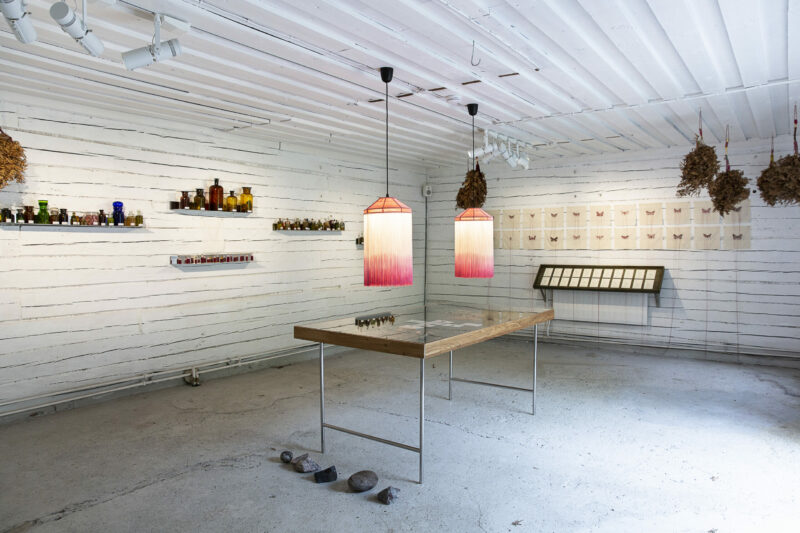
Lotta Petronella with Sami Tallberg & Lau Nau: ‘Materia Medica of Islands,’ 2023 // Courtesy of HAM, Helsinki Biennial and Sonja Hyytiäinen
Krysa’s curatorial approach emphasizes works that are in dialogue with the unique environment of Vallisaari. ‘Materia Medica of Islands’ (2023) by Lotta Petronella—an artist, medicine and flower essence maker and tarot scholar—is one of the site-sensitive artworks anchored in the island’s offerings. Her contribution, for which she collaborated with chef and foraging pioneer Sami Tallberg and composer and performer Lau Nau, presents a cosmology of the island through a transdisciplinary artwork. Inspired by early-20th-century activist Ilma Lindgren, who fought for the right to roam and forage in the wild, it includes an apothecary with local medicinal plants displayed in a shed alongside miscellaneous objects, drawings, embroideries and sound recordings. An additional source of inspiration comes from moths, which have been subjects of study on Vallisaari Island since the 1960s, serving as important indicators for monitoring climate change. In Petronella’s artwork, various types of these ephemeral nocturnal pollinators adorn a tarot deck made by the artist, offering spiritual guidance to visitors while also symbolizing the fragile vitality of the ecosystem.
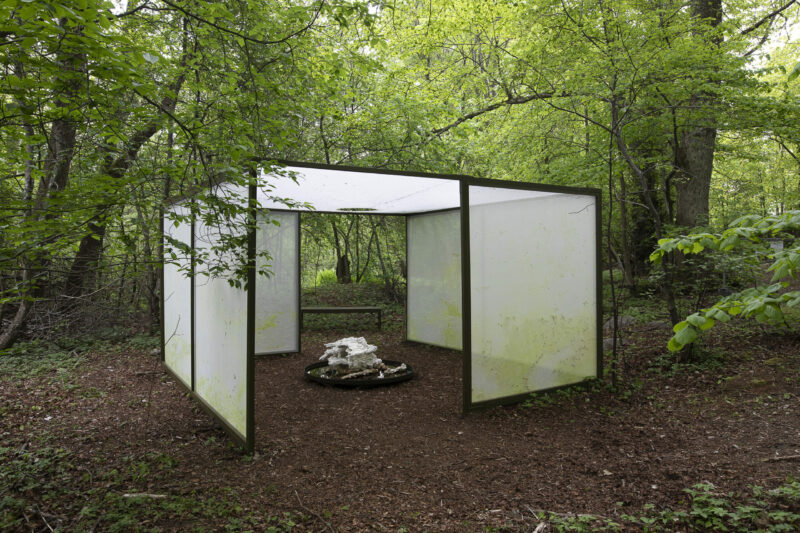
Alma Heikkilä: ‘coadapted with,’ 2023 // Courtesy of HAM, Helsinki Biennial, Kirsi Halkola
Another artwork engaging with the island’s species is Alma Heikkilä’s ‘coadapted with’ (2023)—a spontaneously evolving installation in the forest, consisting of a sculpture sheltered by fabric panels. Over the course of the exhibition, the color of the sculpture changes as rainwater mixed with dye made from locally sourced plants drips onto the plaster. The artwork points to the forest as “a place of risk,” as Heikkilä puts it, where unpredictability reigns, unlike the controlled environment of a museum. Specifically made for this location is also Adrián Villar Rojas’ ‘The End of Imagination’ (2023), a series of 15 sculptures scattered across the island and tied to detailed virtual worlds created by the artist. Inspired by bird nests, these artificial constructions mimicking organic shapes are inconspicuously placed on trees, making them more available to various birds and insects than human visitors. Over time, leaving space for a response from animals and other environmental agents and factors, both of these artworks may turn into symbiotic rather than parasitic entities.
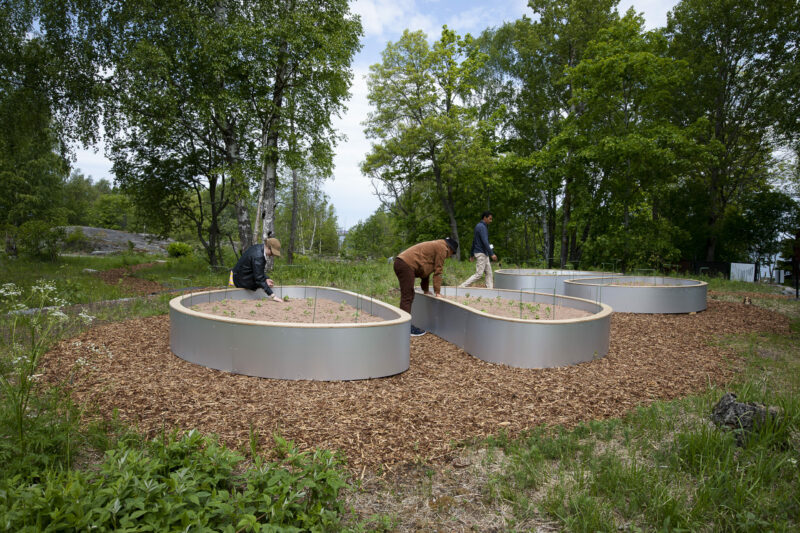
PHOSfate: ‘PHOSfate,’ 2023 // Courtesy of HAM, Helsinki Biennial and Kirsi Halkola
The Baltic Sea, and more broadly water, as a site of contamination, memory and myth-making is central in several artworks on display. Among them is Mohamed Sleiman Labat and Pekka Niskane’s installation ‘PHOSfate’ (2023), a sandoponic garden for growing food inspired by Sahrawis’ way of sustenance in refugee camps. The installation points to the effect of phosphate mining, from displacement of the Sahrawi community in Sahara to eutrophication and death of marine life caused by large amounts of phosphatic fertilizers reaching the Baltic Sea. In one of the gunpowder cellars housing artworks on Vallisaari, Tuula Närhinen displays ‘The Plastic Horizon’ (2019–23), a rainbow-colored installation of mostly plastic debris washed up on Helsinki’s seashores, reminding the viewer of their fatal allure to various sea creatures.
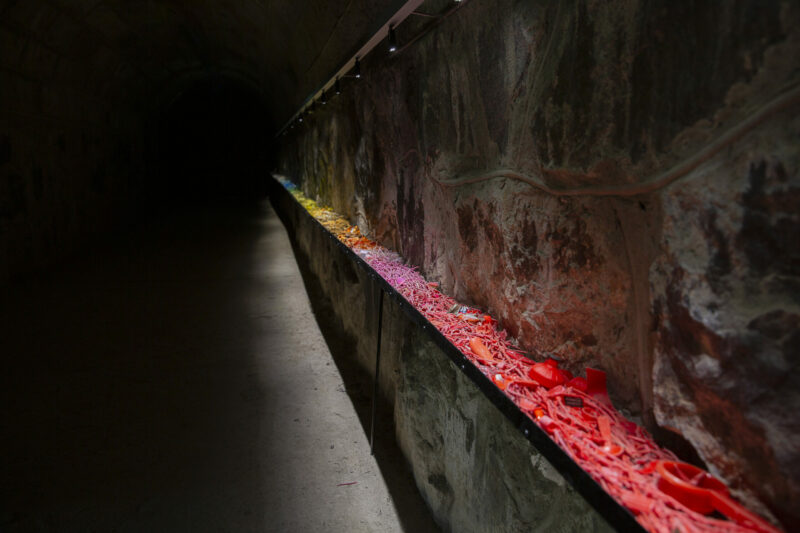
Tuula Närhinen: ‘The Plastic Horizon,’ 2019–23 // Courtesy of HAM, Helsinki Biennial and Sonja Hyytiäinen
Like many of the recent exhibitions, this biennial upholds artists as visionaries who, through the practice of “fictioning,” propose new ways of dealing with problematic legacies of the past and the uncertainty about the future. Inspired by the Baltic sea, Emilija Škarnulytė’s film installation ‘Hypoxia’ (2023) merges Lithuanian mythology, “alien archaeology perspective” and the phenomenon of hypoxia (oxygen depletion that causes dead zones in seas) to speculate on extinction and the scientific conditions and technologies related to deep-sea mining and ocean mapping. At the Helsinki Art Museum, two imposingly large rock-shaped sculptures with embedded video and sound comprise Diana Policarpo’s ‘Ciguatera’ (2022). Employing science and science fiction, the work explores colonial histories of the Portuguese-administered Savage Islands through natural biodiversity, narrated by the island’s inhabitants and the personified island itself. The title refers to well documented poisoning of the fish, and consequently people, from a toxin linked to nuclear testing and other anthropogenic damage.
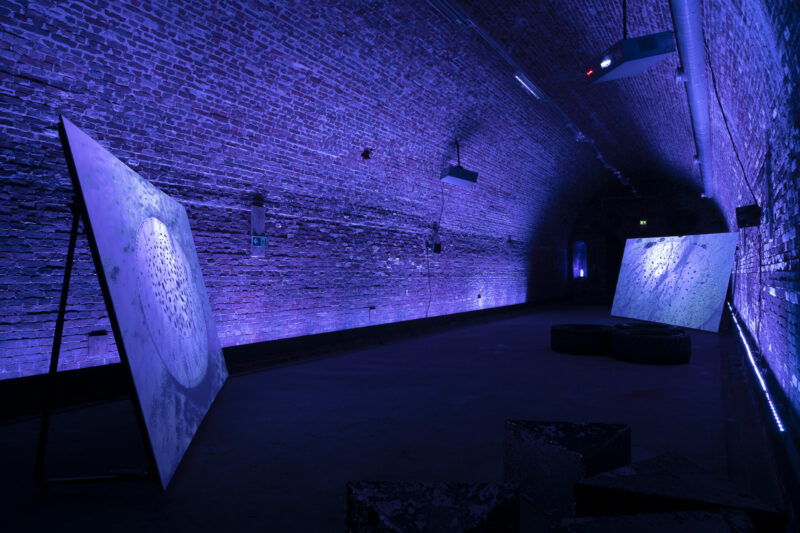
Emilija Škarnulytė: ‘Hypoxia,’ 2023 // Courtesy of HAM, Helsinki Biennial and Kirsi Halkola
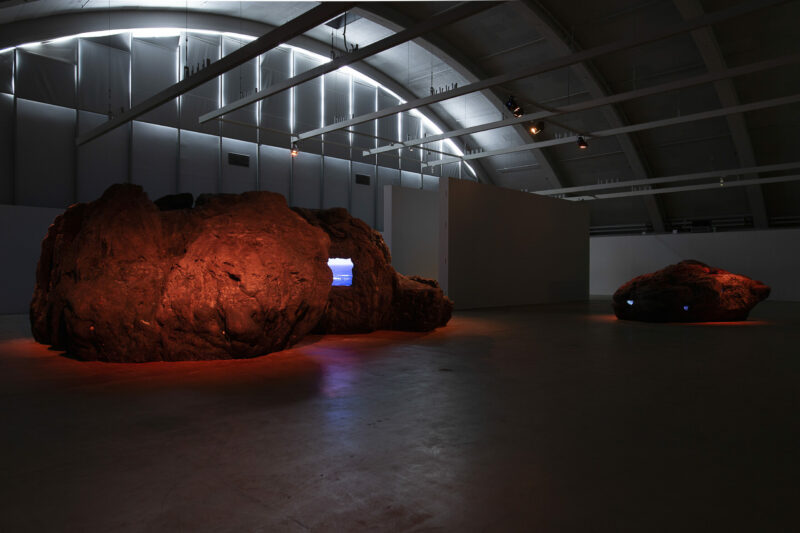
Diana Policarpo: ‘Ciguatera,’ 2022 // Courtesy of HAM, Helsinki Biennial and Sonja Hyytiäinen Biennial/Sonja Hyytiäinen
The second edition of the Helsinki Biennial materializes the feeling of environmental doom portentously lingering in the collective consciousness. However, its greater value lies in proposing and practicing ways toward overcoming issues on multiple scales, from microscopic to planetary. Mirroring Tsing’s ideas, it views nature not as separate from us, an Eden-like garden for replenishing escapes from capitalocentric realities into the “untouched wilderness,” but rather as our common center of life, where human and non-human entities collaborate to make any space “wilder” and ultimately more habitable.
Helsinki Biennial
‘New Directions May Emerge’
Exhibition: June 12–Sept. 17, 2023
helsinkibiennaali.fi
Various locations

























